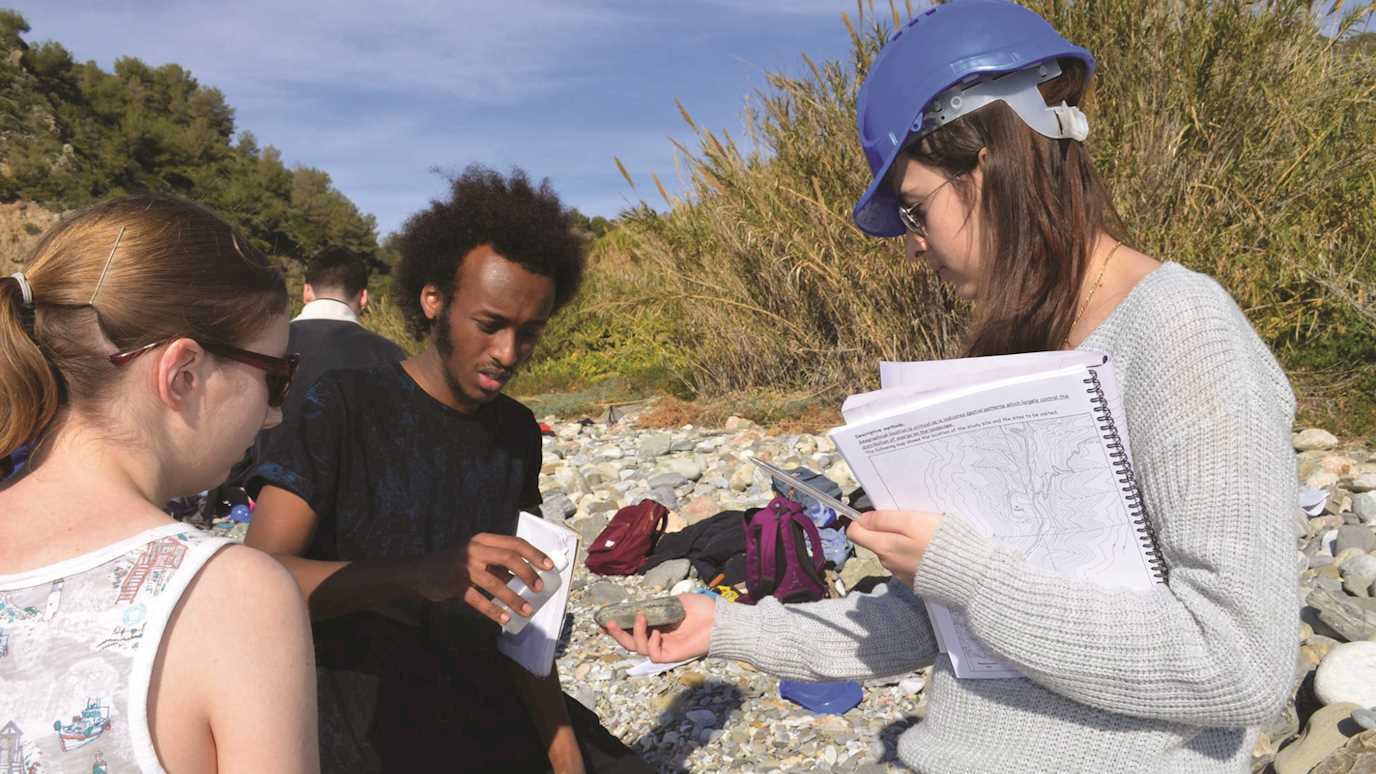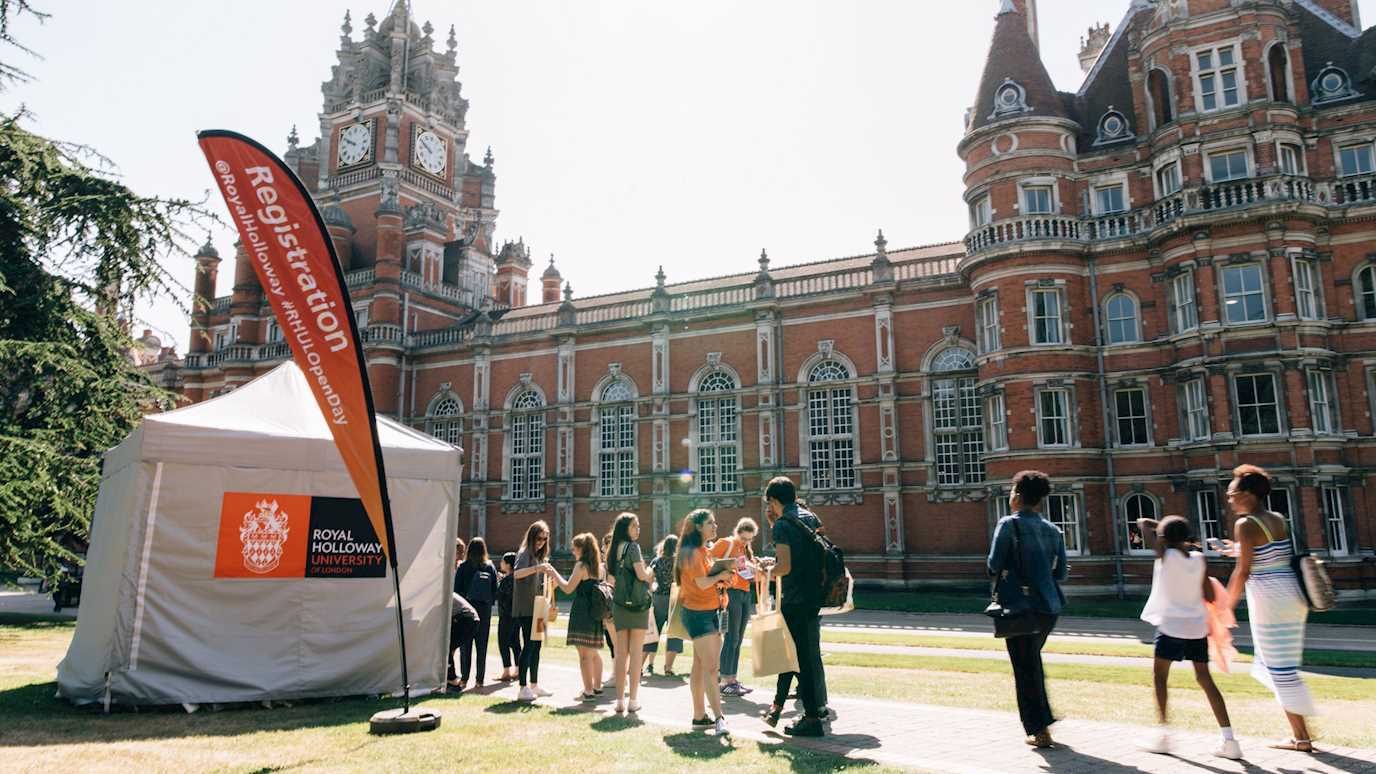Key information
Duration: 1 year full time or 2 years part time
Institution code: R72
Campus: Egham
UK fees*: £11,600
International/EU fees**: £23,700
The course
Past Climate and Environmental Change (MSc)
Study Past Climate and Environmental Change (formerly know as MSc Quaternary Science) at Royal Holloway, University of London and you’ll receive comprehensive postgraduate training on the time-dependent processes that affect environmental change, helping you to understand and confront some of the most profound issues of our time.
You’ll acquire an advanced knowledge and understanding of key issues within climate and environmental change, including high-resolution palaeoenvironmental records, high-precision dating and multi-proxy approaches to the investigation of past environmental changes.
The Department of Geography is one of the leading centres for international geographical research in the UK. In the 2021 Research Excellence Framework our research environment was recognized as overwhelmingly world class, and Times Higher Education places Geography joint fifth in the country.
The staff and facilities of the Centre for Quaternary Research (CQR) at Royal Holloway provide a wide range of opportunities, including participation in internationally significant research programmes in Quaternary science and links with potential employers. This consortium of staff constitutes the strongest teaching team in the UK for the provision of Masters' teaching in the field of non-marine Quaternary earth science and environmental change. You’ll have the chance to contribute to this leading research culture with your own individual research project.
Study a Masters degree in Past Climate and Environmental Change and you’ll develop a thorough understanding of many contemporary environmental issues, including climate change, biological responses to environmental change and soil erosion. and be well placed to pursue a rewarding career in your chosen field.
From time to time, we make changes to our courses to improve the student and learning experience. If we make a significant change to your chosen course, we’ll let you know as soon as possible.
Course structure
Core Modules
-
In this module you will develop an understanding of the processes that lead to the accumulation of sediment sequences, becoming familiar with the strengths and limitations of sediment sequences as archives of palaeoenvironmental change. You will learn how to record sediment characteristics and attributes in the field and explain the main techniques used to construct terrestrial stratigraphies. You will consider the issues associated with constructing stratigraphies within the fragmented terrestrial record and examine the problems of relating these stratigraphies to climatic events in the continuous marine isotopic record. You will also analyse the use of terrestrial stratigraphies in interpreting climatic events and transitions.
-
In this module you will plan and conduct field-based investigations that address key modern research questions in Quaternary Science. You will visit the Western Highlands of Scotland, spending a sustained period in the field to gain in-depth experience of a range of field methods, including landform mapping, instrumental surveying, sub-surface coring, stratigraphic logging and applied numerical modelling. You will look at the extent, timing, rate and causes of growth and demise of the last glaciers to occupy the Western Highlands. You will work as part of a team for the integration of linked field investigations and data synthesis, and give an oral presentation of your field-based experimental results under mock-conference constraints. You will also present your research results in poster form.
-
In this module you will develop an understanding of important palaeoecological proxy methods used to reconstruct Quaternary environments and biotic assemblages. You will look at the methods used to obtain quantitative estimates of past environmental conditions using palaeoecological data. You will consider the principal methods used to date Quaternary sequences and their limitations, and combine these with chronological data in order to construct realistic age models from which the timing, rate and persistence of environmental changes can be inferred. You will also examine how these procedures and their outcomes fit into the wider models of past environmental change and their potential for testing models of future environmental change.
-
In this module you will develop an understanding of the nature and process of climate forcing factors during the Quaternary, including external factors, such as tectonics and orbital forcing, and internal factors, such as ocean circulation, ice sheets, and greenhouses gases. You will look at the archives available to provide Quaternary palaeoclimate records, including ocean and lake sediments, ice cores, and tree rings, and how available proxies are used to reconstruct past climates, such as stable isotopes, microfossils, sedimentology, radiogenic isotopes and biomarkers. You will examine the modelling methods used to reconstruct past climates, such as box, intermediate complexity, and the general circulation model (GCM), and gain an overview of Quaternary climate thesholds, cycles and major events, including onset of Northern Hemisphere glaiation, intensification of the Walker circulation, and the Mid-Pleistocene revolution.
-
In this module you will develop an understanding of the essential field techniques used in Quaternary research, including remote sensing, surveying, mapping, coring and other methods. You will learn how to integrate field data and light detection and ranging (LiDAR) with geographical information systems (GID) to generate and interpret landform models. You will become proficient in the use of graphics for Quaternary sediment logs and other purposes, and consider how you present information, both orally and in the form of webpage design. You will also look at approaches to mapping and interpreting landforms and sediments in the field, acquiring a background in the history of glaciations in Scotland ahead of the fieldwork you will conduct in the Highlands.
- Landscape Dynamics and Hazards
- Geospatial and Temporal Data Science
-
You will design, execute and report a piece of professional-level research in an area of Quaternary science of your choosing. You will identify and conceptualise your research question, and undertake fieldwork and laboratory analysis in order to collect, synthesise and interpret different types of Quaternary science data. A member of academic staff will act as your supervisor, and you will be expected to give an oral presentation of your dissertation proposal to the wider department. You will provide a project plan which outlines the timescales and resources required to successfully complete your investigation, and for laboratory-based dissertations, you may receive direct training in specialist techniques from your supervisor. Your final submission will include a written report that includes maps and graphic presentations of your results.
-
This module will describe the key principles of academic integrity, focusing on university assignments. Plagiarism, collusion and commissioning will be described as activities that undermine academic integrity, and the possible consequences of engaging in such activities will be described. Activities, with feedback, will provide you with opportunities to reflect and develop your understanding of academic integrity principles.
Teaching & assessment
Teaching and learning is mainly by seminars, workshops, problem solving, group working, practical classes, completion of coursework and private study for the taught modules and departmental/university coordinated research training; and for the dissertation by independent research and private study, supported by research supervision. Students receive regular, scheduled, feedback on their performance in taught modules, their dissertation plan and draft proposal (spring term), and their dissertation.
More detailed information on modules, including teaching and learning methods, and methods of assessment, can be found via the online Module Catalogue
Entry requirements
2:2
Archaeology, Botany, Ecology, Environmental Science, Environmental Studies, Geography and Geology.
Candidates with professional qualifications or relevant professional experience in an associated area will also be considered but will be required to demonstrate proficiency in theoretical aspects of the subject.
International & EU requirements
English language requirements
MSc Quaternary Science requires:
- IELTS: 6.5 overall. Writing 6.5. No other subscore lower than 5.5.
- Pearson Test of English: 61 overall. Writing 61. No other subscore lower than 51.
- Trinity College London Integrated Skills in English (ISE): ISE III.
- Cambridge English: Advanced (CAE) grade C.
- TOEFL ib: 88 overall, with Reading 18 Listening 17 Speaking 20 Writing 25.
- Duolingo: 120 overall, 125 in Literacy, 125 in Production, no sub-score below 100.
Your future career
Study Past Climate and Environmental Change at Royal Holloway and you’ll graduate with excellent employability prospects. Our recent alumni have gone on to enjoy careers in the British Geological Survey, Natural England, the Environment Agency, journal publishing houses, Research Councils, environmental archaeology and museums, as well as academic positions within universities.
Over the past decade, around 70% of Past Climate and Environmental Change graduates have gone on to study at PhD level, with the Royal Holloway Centre for Quaternary Science providing opportunities to participate in internationally significant research programmes.
Fees, funding & scholarships
Home (UK) students tuition fee per year*: £11,600
EU and international students tuition fee per year**: £23,700
Other essential costs***: You should budget between £200 and £400 for travel to fieldwork sites.
How do I pay for it? Find out more about funding options, including loans, grants, scholarships and bursaries.
* and ** These tuition fees apply to students enrolled on a full-time basis in the academic year 2025/26. Students studying on the standard part-time course structure over two years are charged 50% of the full-time applicable fee for each study year.
Royal Holloway reserves the right to increase all postgraduate tuition fees annually. Be aware that tuition fees can rise during your degree (if longer than one year’s duration), and that this also means that the overall cost of studying the course part-time will be slightly higher than studying it full-time in one year. The annual increase for continuing students who start their degree in 2025/26 will be 5%. For further information, see the fees and funding , and terms and conditions.
** This figure is the fee for EU and international students starting a degree in the academic year 2025/26. Find out more
*** These estimated costs relate to studying this particular degree at Royal Holloway during the 2025/26 academic year, and are included as a guide. Costs, such as accommodation, food, books and other learning materials and printing, have not been included.
























